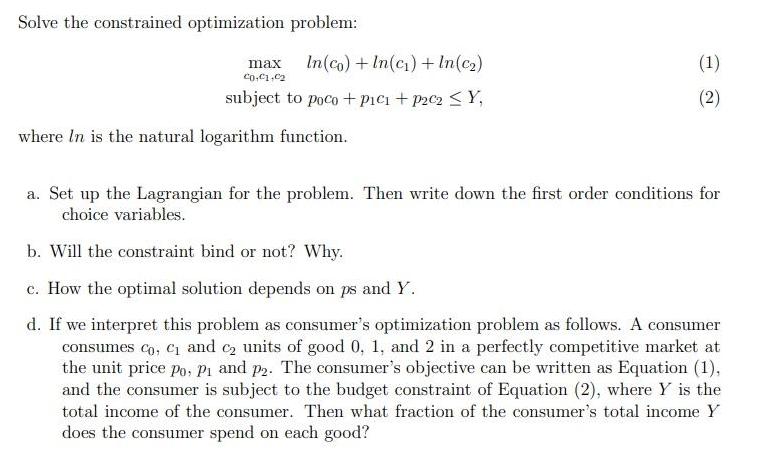Answered step by step
Verified Expert Solution
Question
1 Approved Answer
Solve the constrained optimization problem: max In(co) + In(c) + In (c) CO,C1,C2 subject to poco + pici + P2c2 Y, where In is

Solve the constrained optimization problem: max In(co) + In(c) + In (c) CO,C1,C2 subject to poco + pici + P2c2 Y, where In is the natural logarithm function. (1) (2) a. Set up the Lagrangian for the problem. Then write down the first order conditions for choice variables. b. Will the constraint bind or not? Why. c. How the optimal solution depends on ps and Y. d. If we interpret this problem as consumer's optimization problem as follows. A consumer consumes C, C and c units of good 0, 1, and 2 in a perfectly competitive market at the unit price po, P and p2. The consumer's objective can be written as Equation (1), and the consumer is subject to the budget constraint of Equation (2), where Y is the total income of the consumer. Then what fraction of the consumer's total income Y does the consumer spend on each good?
Step by Step Solution
★★★★★
3.41 Rating (160 Votes )
There are 3 Steps involved in it
Step: 1
SOLUTION We can solve th...
Get Instant Access to Expert-Tailored Solutions
See step-by-step solutions with expert insights and AI powered tools for academic success
Step: 2

Step: 3

Ace Your Homework with AI
Get the answers you need in no time with our AI-driven, step-by-step assistance
Get Started


